Did you know that one of the best ways to get your tomato plants to grow healthy and strong – and produce a big crop of tomatoes is to simply mulch them as soon as you plant with the right combination of mulch?
It’s true! Mulching your tomato plants in just the right way can make a huge difference between plants that flourish and those that struggle to grow. But the secret all lies in what mulch you use, and how and when you apply it!
There are so many advantages to using mulch around your tomato plants. The first and most obvious is that it creates a low-maintenance garden that won’t leave you spending hours weeding and working.
Let’s face it, there’s nothing more frustrating than having your tomato plants overtaken by weeds. Not only is it unsightly, all of those weeds also steal valuable nutrients and water from the soil where your tomato plants grow. And the more they take, the less power your tomato plants have to grow and produce.
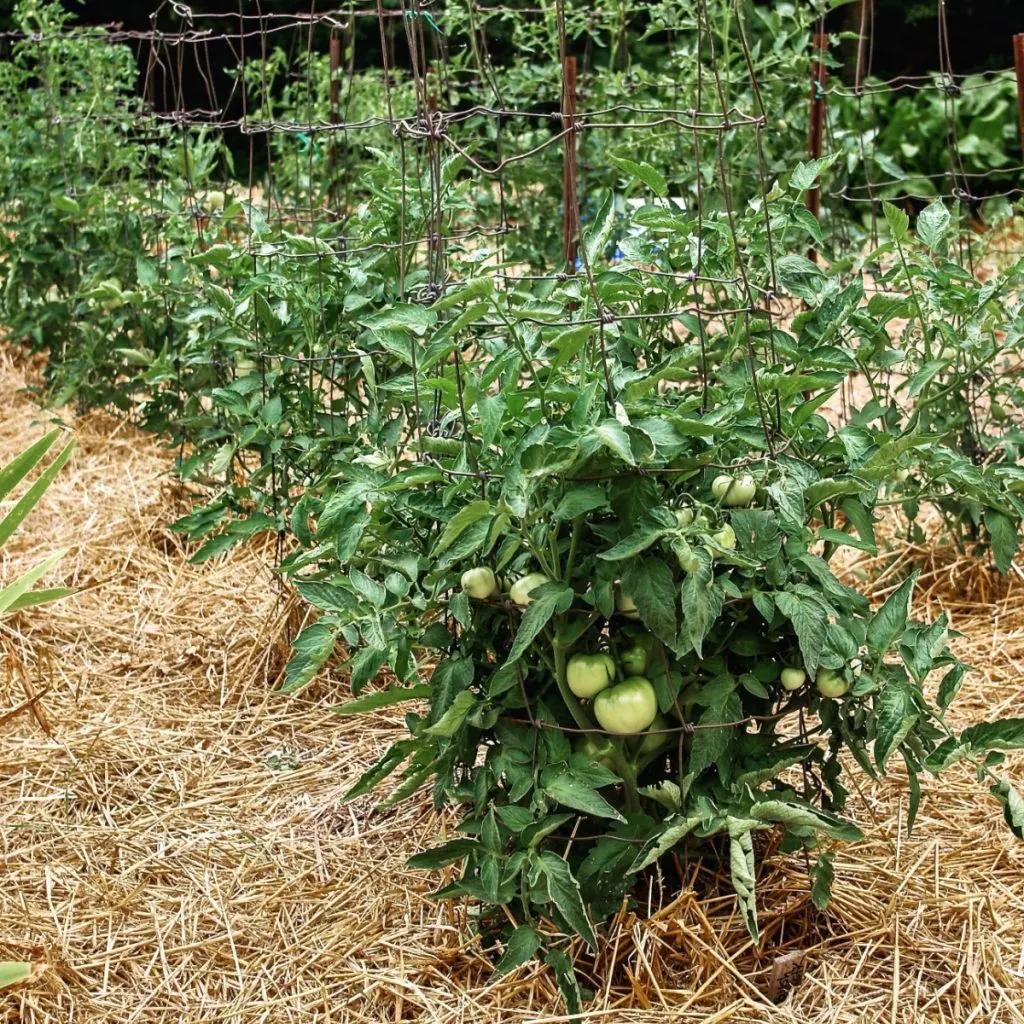
But mulch can help keep all of those weeds away. All while doing so much more for your tomato plants’ health and productivity. With that in mind – here is an in depth look at why mulching your plants from the get-go is so important – and how to mulch your tomatoes to set them up for big success!
Why Use Mulch – How To Mulch Tomato Plants
Bare soil is not happy soil. If you have bare soil around your tomato plants, weed seeds will find their way in to grow there. Once weeds establish in the soil, they end up competing for the vital nutrients and resources that the tomato plants need to grow healthy and strong.
Adding a thick layer of the right kind of mulch covers the bare soil and leaves no place for seeds to land and take hold. This results in a vegetable garden that requires little to no weeding throughout the entire growing season – and more nutrients and water for your growing tomato plants.
But in addition to less weeding, a thick layer of mulch also acts as an insulator to protect the soil. After it rains or you water, mulch helps to hold in moisture and prevent the soil from quickly drying out in the hot summer sun.
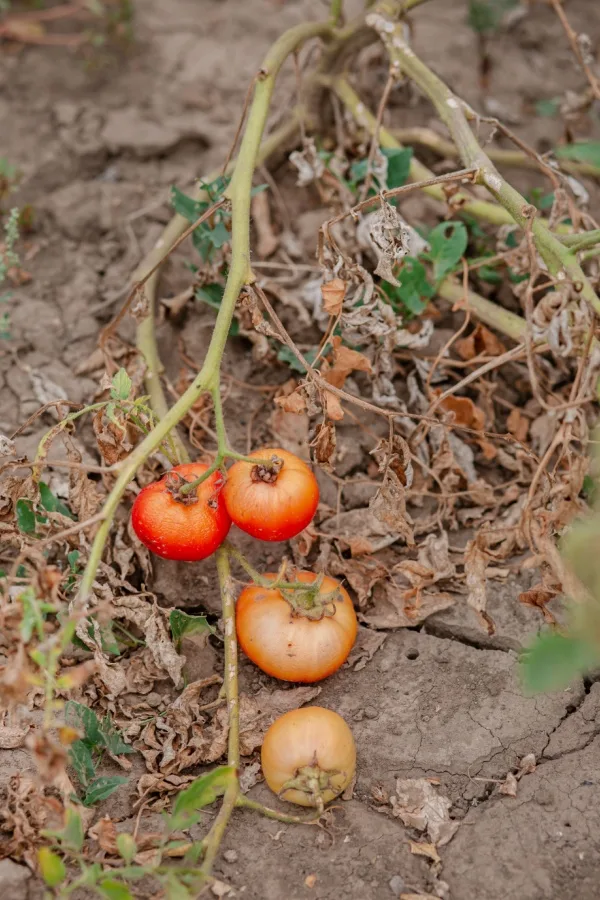
It also help to regulate the soil temperature and prevent the shock of hot days or cold nights. These temperature swings are often common in late spring or early fall and can cause stress or damage to tomato plants.
How Mulch Helps Prevent Blight – How To Mulch Tomato Plants
Another benefit of using mulch is that it prevents soil-borne disease from attacking otherwise healthy tomato plants. Blight can live in the soil for many years after an infestation. And unfortunately, if the soil is bare, those spores can splash up on the bottom leaves of tomato plants whenever it rains or you water.
But with a thick layer of mulch covering the soil, the blight spores are also covered. And because of that, it’s far more difficult for the spores to find their way to your tomato plants. See our article: What Causes Tomato Blight – And How To Keep It Off Of Your Plants!
Last but not least, as you will see below, if you use the right kind of mulch – it can also help to power your tomato plants with even more nutrients and power. With growing great tomato plants in mind – here is a look at the 3 simple secrets to mulching your tomato plants for a big harvest!
3 Simple Secrets To Give Your Tomato Plants The Perfect Mulch!
#1 Mulch Your Plants With Power
One of the best things you can do when mulching is to mulch with power. And the easiest way to do that is to use compost as a first layer of mulch – and add in some worm castings too!
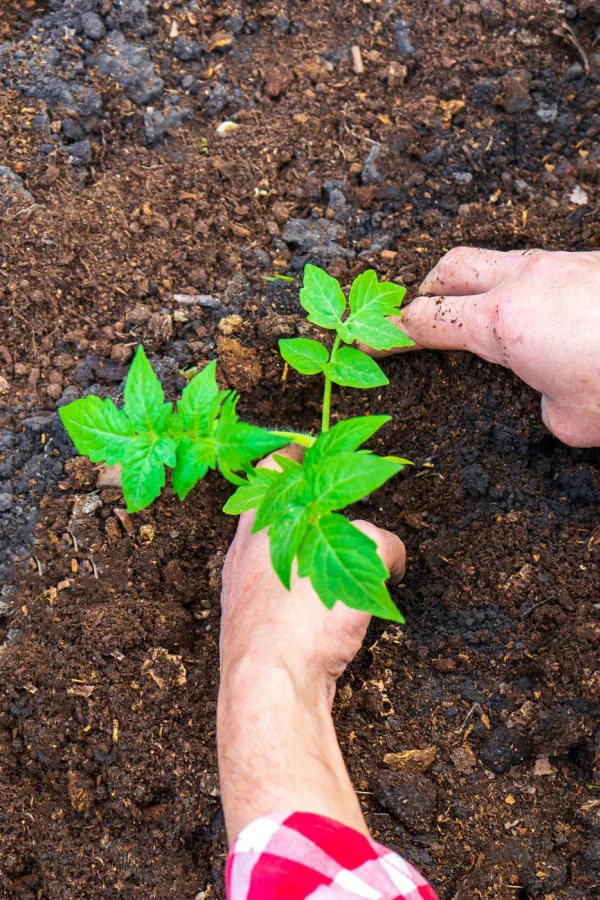
Compost is loaded with nutrients and organic matter. And it can provide tomato plants with the perfect type and amount of energy every time it rains or you water plants. That’s because when water runs soaks through it, it leaches all of those amazing nutrients right down into the soil where the tomato plant’s roots can easily absorb them.
To use, apply a two to three inch layer of compost right on top of the bare soil. Spread the compost out about 12 inches in diameter from the plant’s stem. This will provide plenty of nutrients to the root zone of your tomato plants – right from the start! Product Affiliate Link: Charlies Bagged Compost
In addition, this is a perfect time to add a cup of worm castings to the compost layer. Just like compost, they will feed your plants slowly as their nutrients leach down into the soil. Affiliate Link: Pure Worm Castings
#2 Using The Right Mulch On Top Of The Compost – How To Mulch Tomato Plants
The next step is to apply a thick layer of organic mulch on top of the compost. Thick enough that it will have the ability to keep weeds out, moisture in – and help regulate the soil temperature. But here is where choosing the right natural mulch is a big key to success!
Even though there are several different types of natural mulches available – not all of them are great to use around tomato plants.
For instance, wood chips are better left for walking spaces or around mature perennials. In addition, some commercial mulches contain chemicals and dyes that are better left completely out of the garden altogether since they can leach into the soil.

So what can you use to mulch your tomato plants? The best three options are straw, grass clippings or shredded leaves. All of these natural products help to protect the soil while adding organic matter back to the soil as they break down over time.
That’s right – all three not only help protect tomatoes, but they also break down and give nutrients back to the soil.
Using Straw, Grass Clippings Or Shredded Leaves To Mulch Tomato Plants
Straw is the dry stalk that is leftover from grain crops once the grain and chaff have been removed. It can be used anywhere throughout your garden, including on walking paths. It helps to protect the soil while allowing moisture and air to get through to the soil.
Grass clippings are also an excellent choice for mulching around tomato plants. When first applied, green grass clippings help to add nitrogen back to the soil. And nitrogen is vital for tomato plants to help fill out and produce foliage.
Another great advantage of using grass clippings is they are usually readily available each time you mow and at no cost to you. Just avoid using clippings from treated lawns since those chemicals can leach into the roots of your tomato plants.
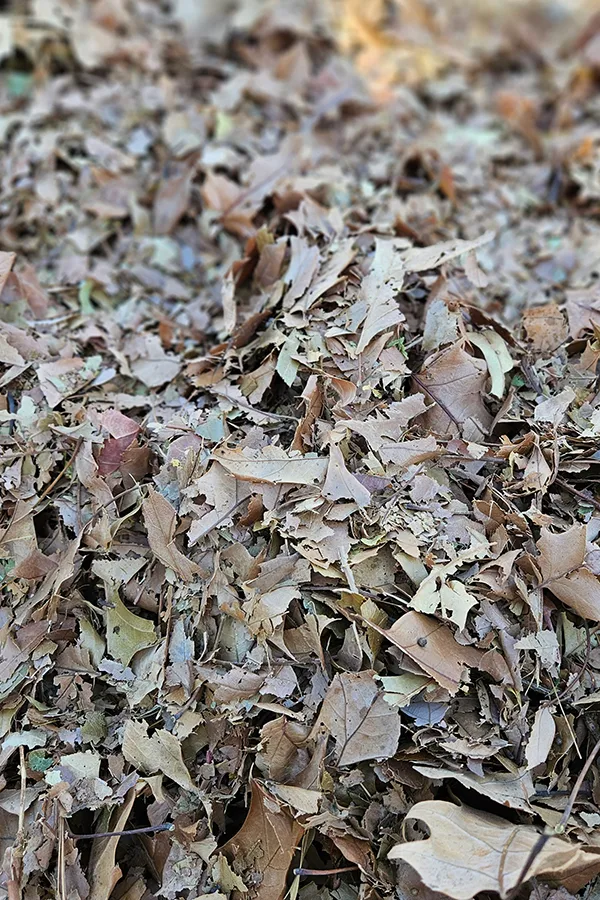
Shredded leaves are also a great choice. Whole leaves can create a solid barrier that moisture and air cannot penetrate. However, shredded leaves are perfect as they allow moisture through and they break down easily.
Choose leaves from maple, ash, birch, and fruit trees to use around tomato plants. Avoid using leaves from black walnuts, eucalyptus, buckeye, and horse chestnut trees since they contain chemicals that can kill tomato plants.
One thing to avoid using is hay in your garden space. Hay is sometimes mistaken for straw, but it has all of the seed heads still attached. When you use hay as mulch, you are basically planting all of those seeds. This results in a huge mess instead of help!
#3 Mulch Tomato Plants Early And Deep!
Last but not least, mulch your plants early and very deep! As soon as you get your tomato transplants in the ground, it’s time to add your mulch. This allows the mulch to go to work right from day one.
The mulch allows for less inconsistency of moisture levels and soil temperatures, resulting in less stress for tender young plants. In addition, mulching at the time of planting prevents unwanted weed seeds from taking hold as well.
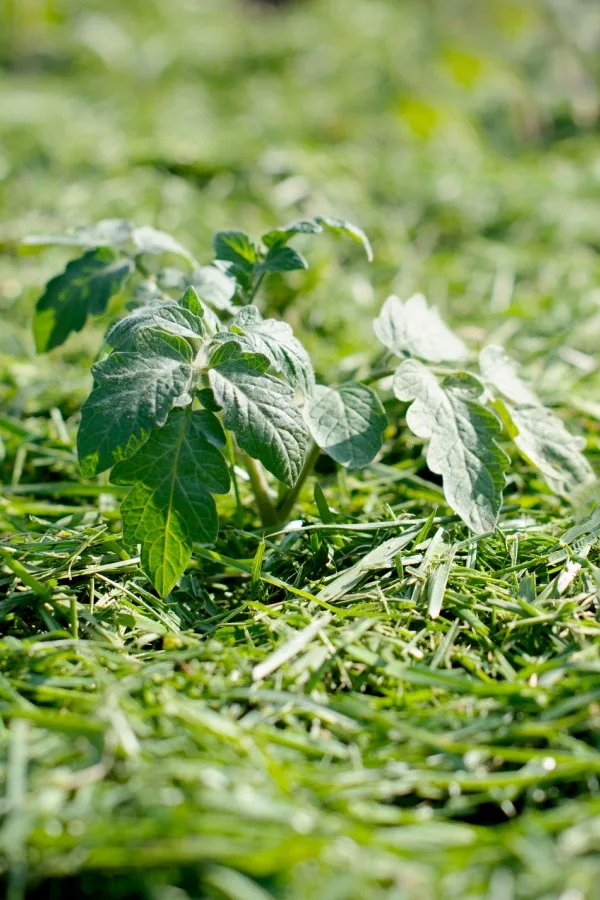
And when you put it down – apply it in a thick layer! A 4 to 6 inch layer is best, snuffing out weed seeds and keeping moisture in place. When you do mulch, remember that it is best to keep a couple of inches between the mulch and the tomato stem. This helps to keep the main tomato plant stem from rotting from too much moisture.
Finally, keep that thickness all throughout the growing season. You may need to reapply more mulch once or twice during the growing season as it starts to break down. This is important to keep a thick layer in tack to keep your plants protected all summer long.
Here is to using the right mulch on your tomato plants – and to having your best tomato harvest ever this year!
Simple Garden Life
Follow Our Facebook Page For Even More Great Tips! Simple Garden Life Facebook Page
Simple Garden Life is a website dedicated to keeping gardening fun, simple and enjoyable! We publish two new articles each week along with a new garden podcast episode every two weeks. This article may contain affiliate links.
